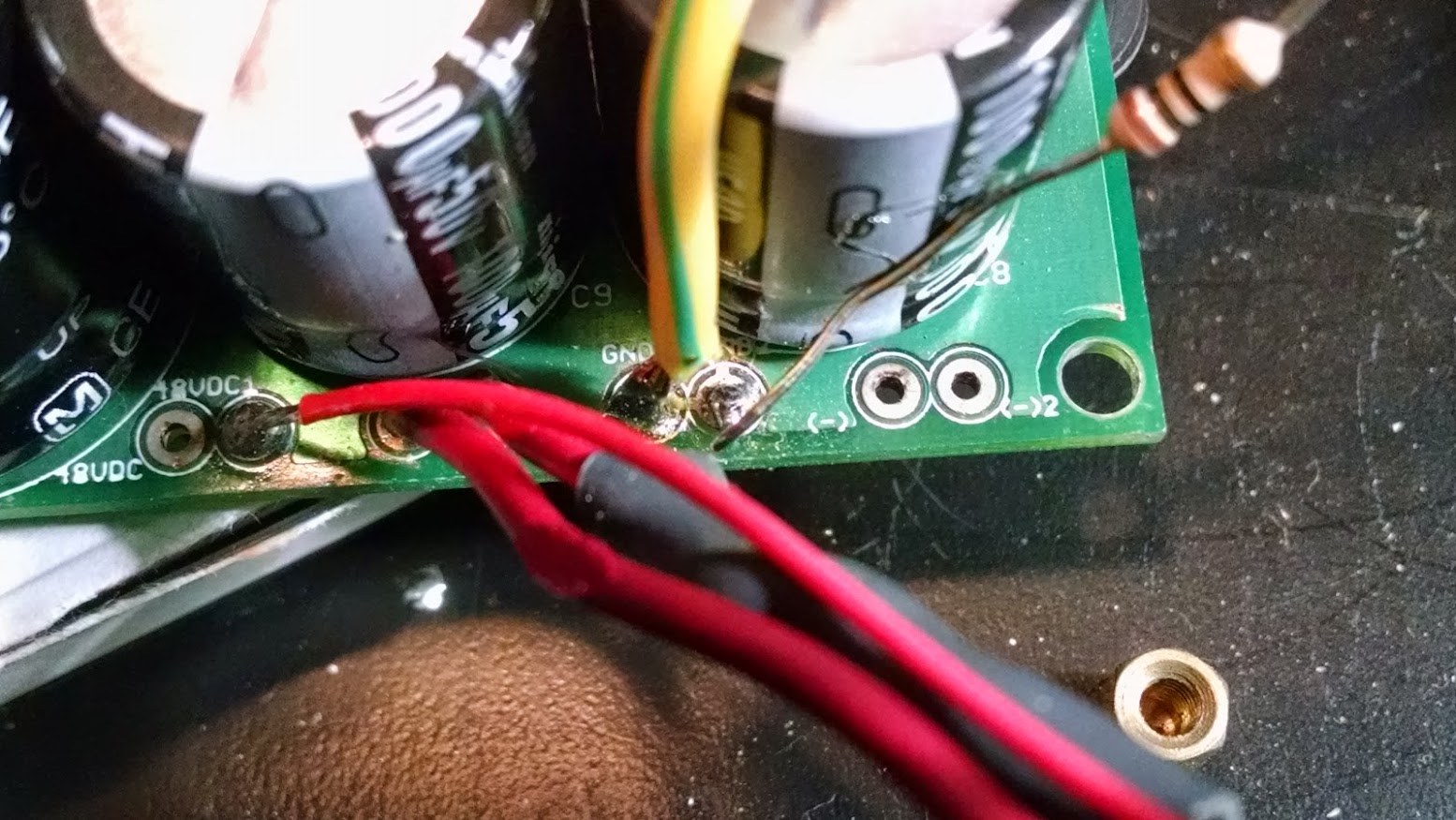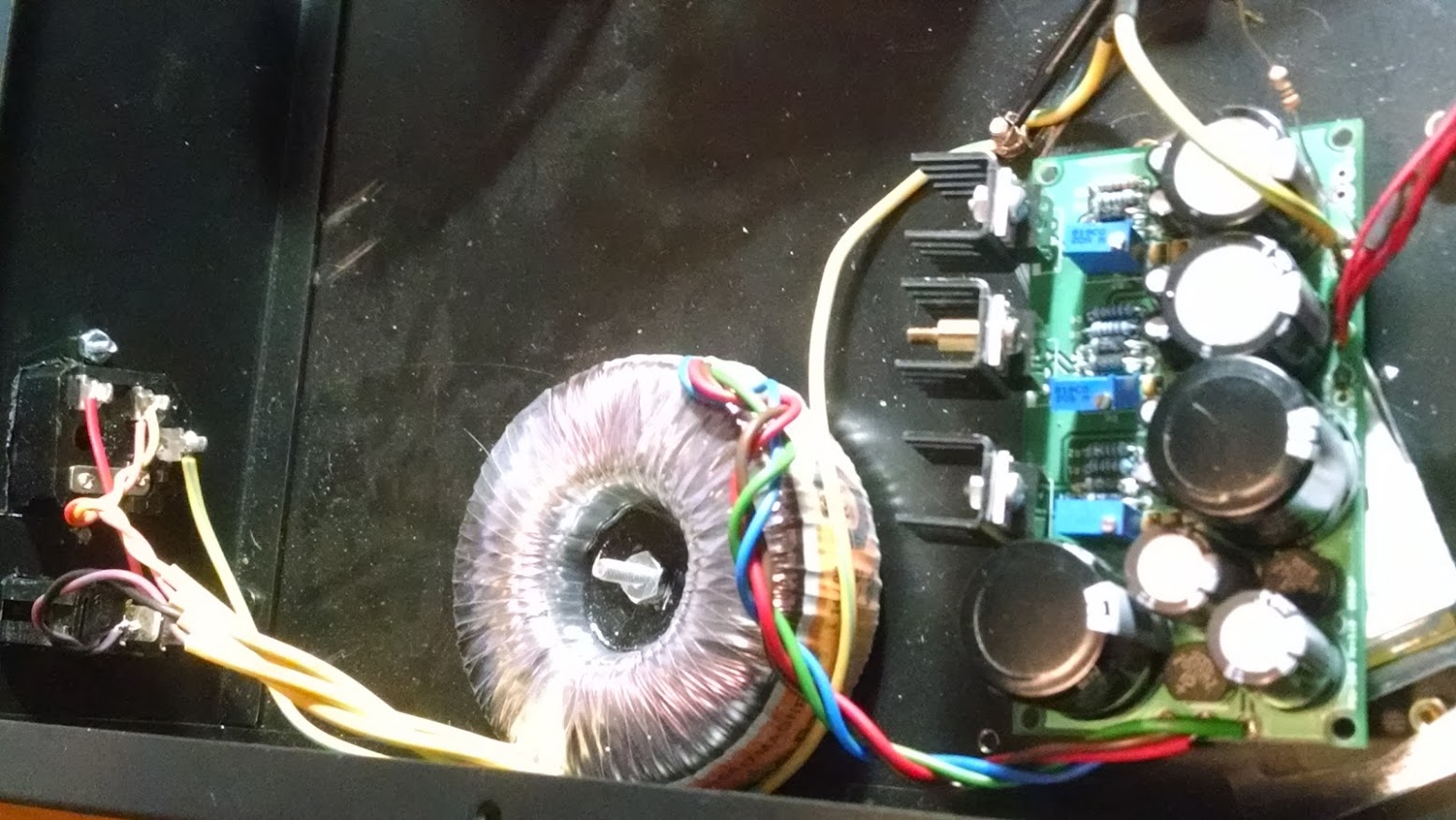mtw
Well-known member
madriaanse said:Sounds like perhaps your voltage regulator (LM317) is shorting to the chassis. If so, consider giving the regulator its own heatsink and insulating it from chassis.
M.
OK here's some pictures. This is all pretty slap dash as I was debugging the grounding problem.
I have individual leads to each 0v pad, the end of those leads are soldered to a 10Ohm resistor, then that's soldered to the GND pad on the 1848:

And this is the ground routed from GND to a post on the chassis, to the wall outlet ground.

With the COM lead of my DMM clipped to the chassis, I measure 4.5MΩ at the GND pad for both connections.
(time passes....)
OK looks like my 10Ω resistor burned out - it's reading 9MΩ.
So, assuming I have a good 10Ω resistor hanging out - is this wired up correctly?
Thanks for the help!



































